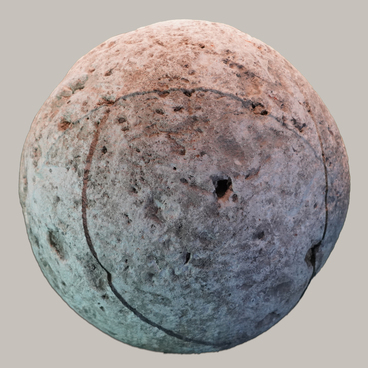The collection of the Museum of the History of Tatar Statehood and the Republic of Tatarstan contains a full-size copy of a Cuman (Polovets) female stone statue. Researchers date it to the end of the 11th — the beginning of the 12th centuries.
Stone statues of ancestors are a characteristic feature of the Polovets culture. The statues were made of grey sandstone, their height reached 4 meters. The sculptures were also called Kurgan stelae or Polovets stelae.
The Polovets (cumans) are a nomadic Turkic people who had their own state Desht-i Qipchaq (Cumania) (another name is the Polovets steppe). It was located between the Danube and Irtysh rivers.
In the culture of the Polovets, statues symbolized ancestors — they were placed on the highest sections of the steppe, watersheds, as well as on burial mounds. For the figures, square or rectangular sanctuaries were specially built. They were fenced with stones, and the size depended on the number of ancestors revered in it. The statues were placed in the centre of the temple, the face had to look to the East. Most often, one or more statues were placed in the sanctuary, less often — 12-15. In such places, the funeral cult of ancestors was carried out, which was not directly associated with burials. Over time, this rite was transformed into the cult of the leaders-patrons of the horde.
According to the canons, the ancestor was depicted in a standing or sitting position. In the hands of the statue, there were always bowls for sacrificing or ‘treating’. Male faces were distinguished by moustaches and beards. The female figures were plump and rounded, usually with small, loose lips. They were presented with bare breasts to emphasize the main purpose of this organ — feeding children.
The female statues were called ‘stelae’ — the word comes from the Turkic ‘balbal’, which means ‘ancestor’, ‘grandfather-father’. They symbolized the invincibility and immortality of the warriors. Patrons in the form of a woman gave strength, fed and protected the nomads. For this they brought them sacrifices — at the foot of the statues, researchers found the bones of rams.
12th century is the heyday of Polovets sculpture. At this time, thousands of statues were made in the Polovets workshops. Due to the huge number of orders, the growth of production, the number of stone cutters and sculptors in the state increased. Due to the fact that the statues have survived to this day, the researchers accurately described the costumes, jewellery, weapons, material and even spiritual life of the Polovets.
Stone statues of ancestors are a characteristic feature of the Polovets culture. The statues were made of grey sandstone, their height reached 4 meters. The sculptures were also called Kurgan stelae or Polovets stelae.
The Polovets (cumans) are a nomadic Turkic people who had their own state Desht-i Qipchaq (Cumania) (another name is the Polovets steppe). It was located between the Danube and Irtysh rivers.
In the culture of the Polovets, statues symbolized ancestors — they were placed on the highest sections of the steppe, watersheds, as well as on burial mounds. For the figures, square or rectangular sanctuaries were specially built. They were fenced with stones, and the size depended on the number of ancestors revered in it. The statues were placed in the centre of the temple, the face had to look to the East. Most often, one or more statues were placed in the sanctuary, less often — 12-15. In such places, the funeral cult of ancestors was carried out, which was not directly associated with burials. Over time, this rite was transformed into the cult of the leaders-patrons of the horde.
According to the canons, the ancestor was depicted in a standing or sitting position. In the hands of the statue, there were always bowls for sacrificing or ‘treating’. Male faces were distinguished by moustaches and beards. The female figures were plump and rounded, usually with small, loose lips. They were presented with bare breasts to emphasize the main purpose of this organ — feeding children.
The female statues were called ‘stelae’ — the word comes from the Turkic ‘balbal’, which means ‘ancestor’, ‘grandfather-father’. They symbolized the invincibility and immortality of the warriors. Patrons in the form of a woman gave strength, fed and protected the nomads. For this they brought them sacrifices — at the foot of the statues, researchers found the bones of rams.
12th century is the heyday of Polovets sculpture. At this time, thousands of statues were made in the Polovets workshops. Due to the huge number of orders, the growth of production, the number of stone cutters and sculptors in the state increased. Due to the fact that the statues have survived to this day, the researchers accurately described the costumes, jewellery, weapons, material and even spiritual life of the Polovets.



